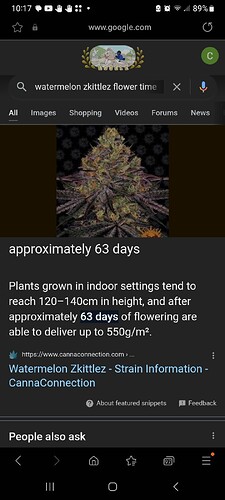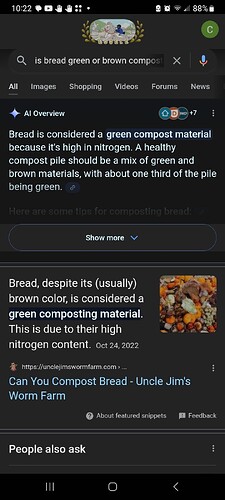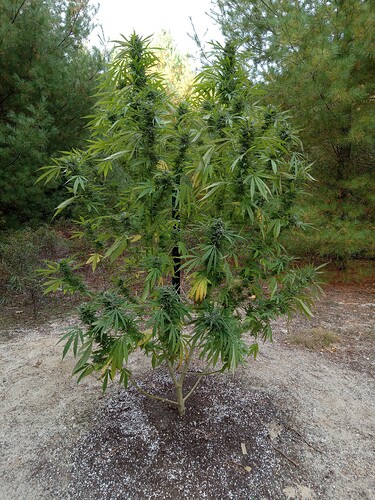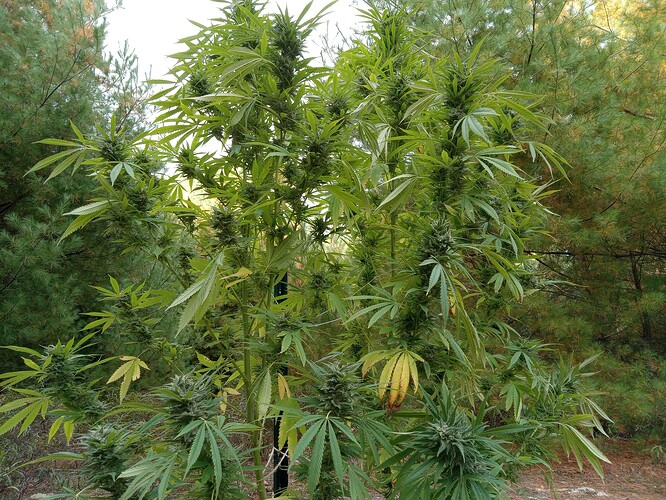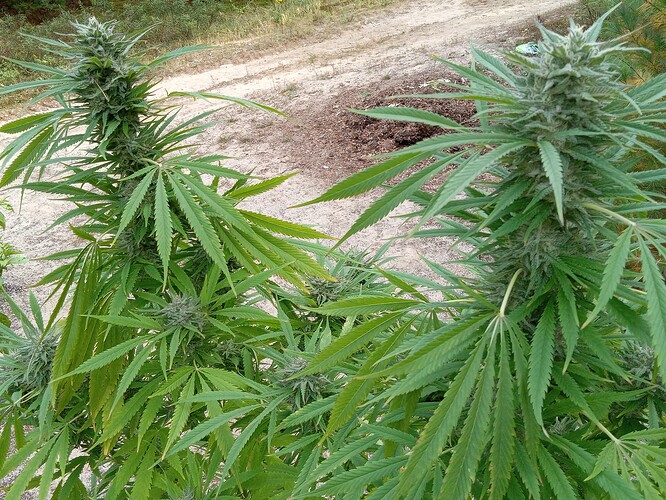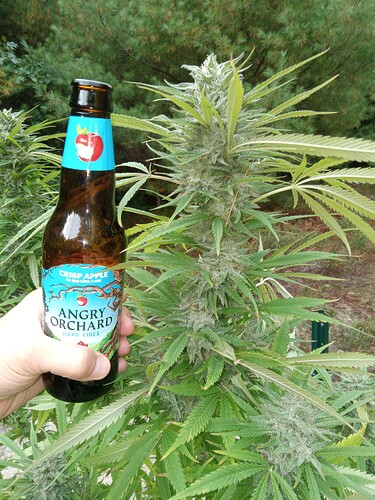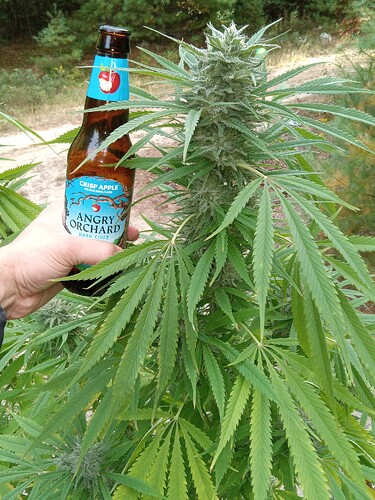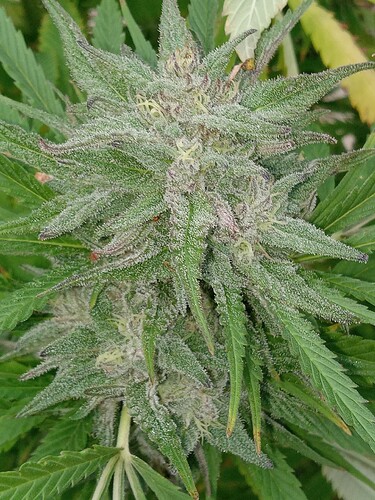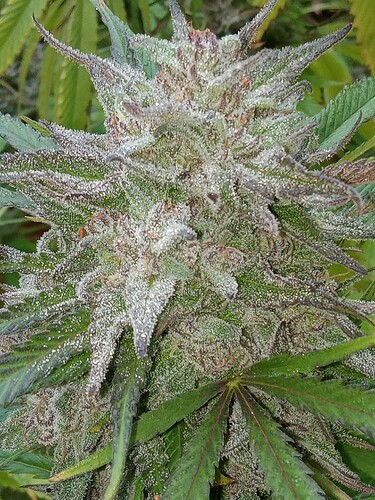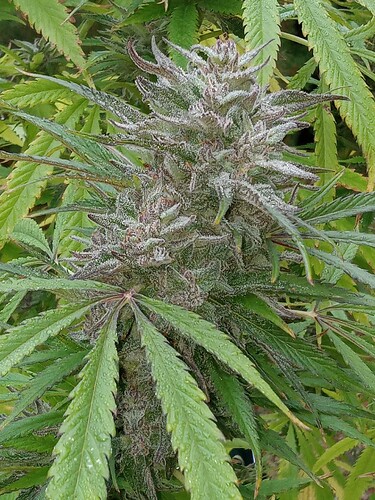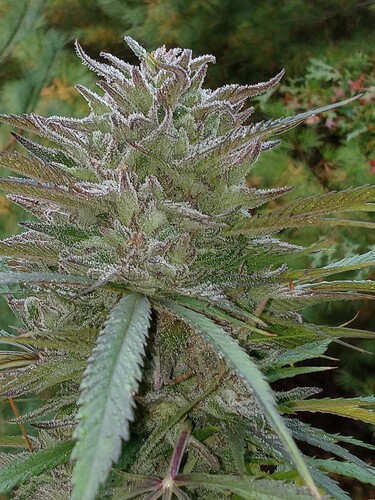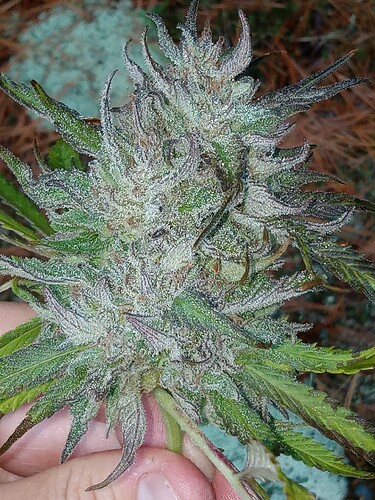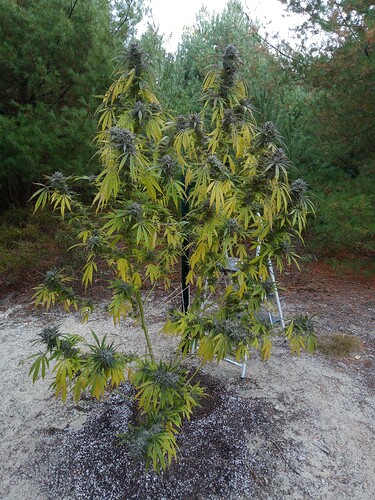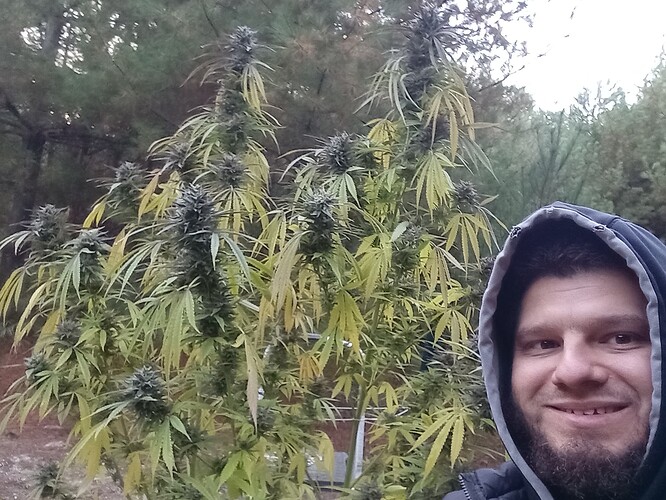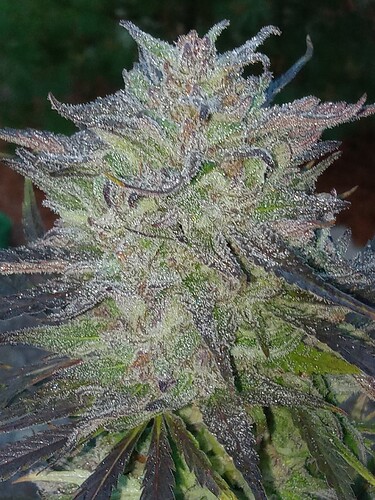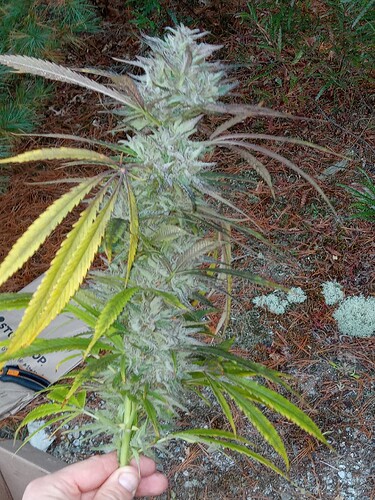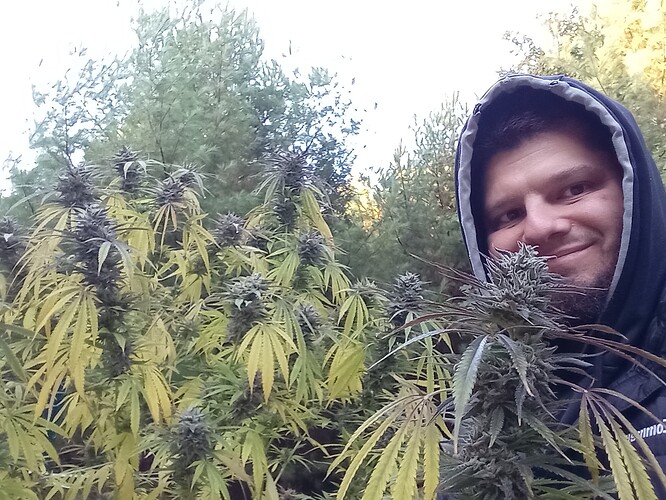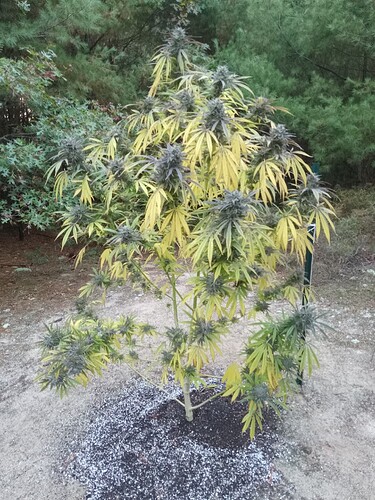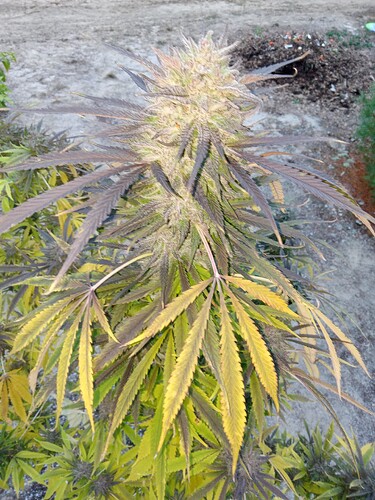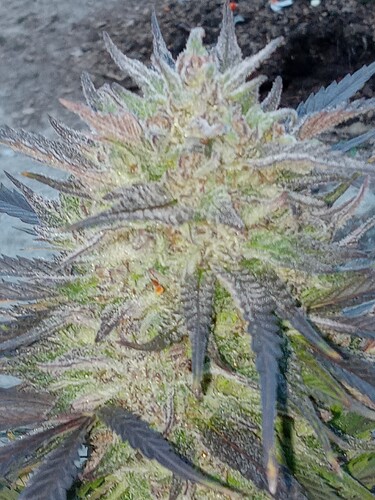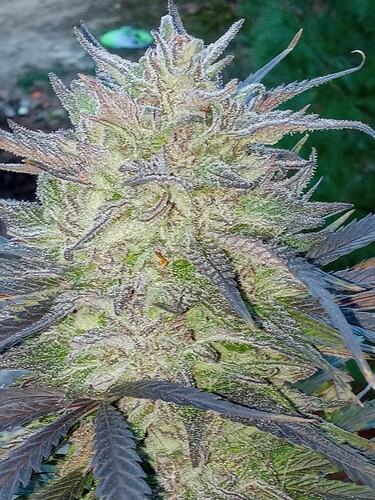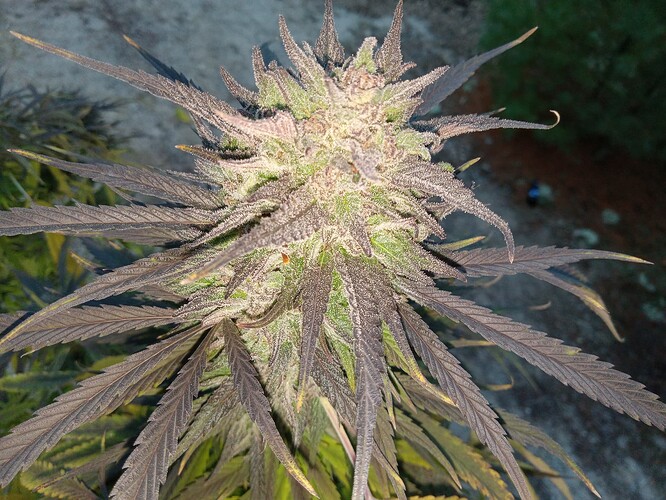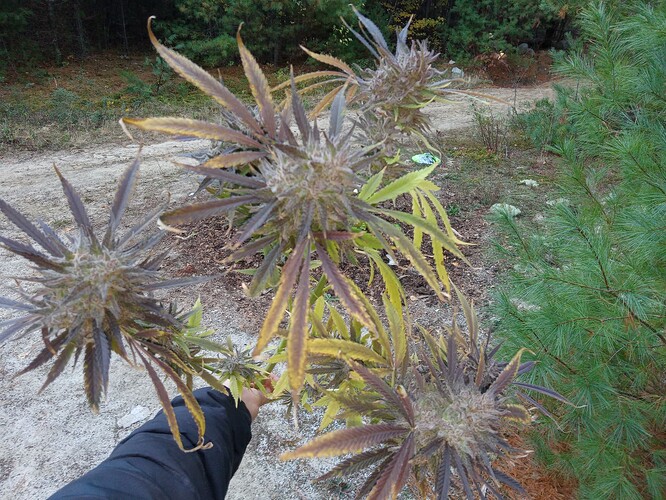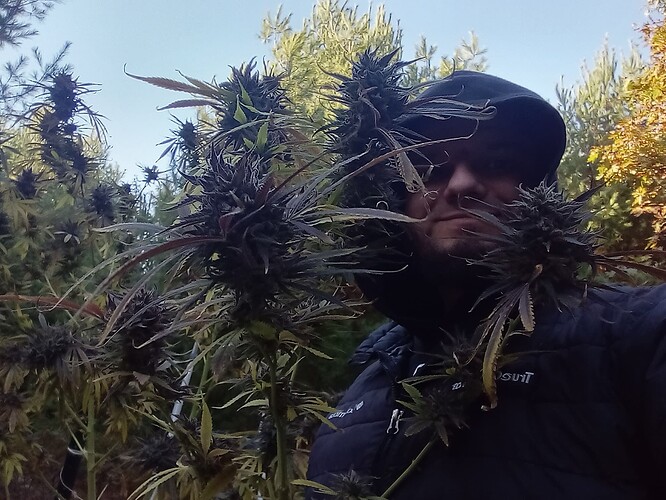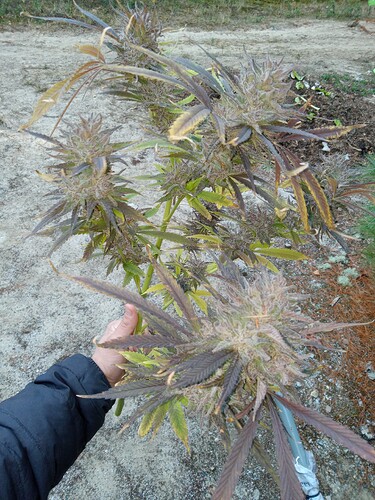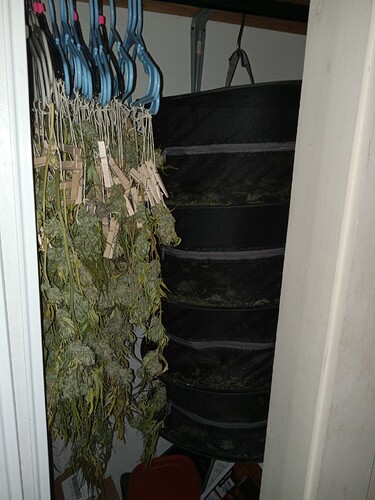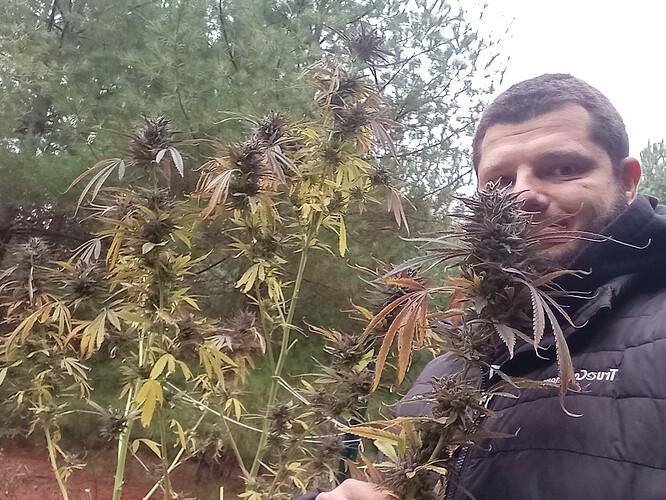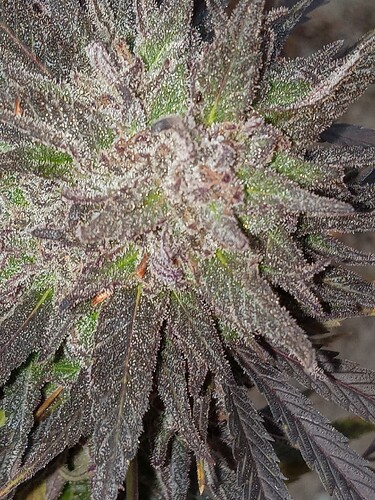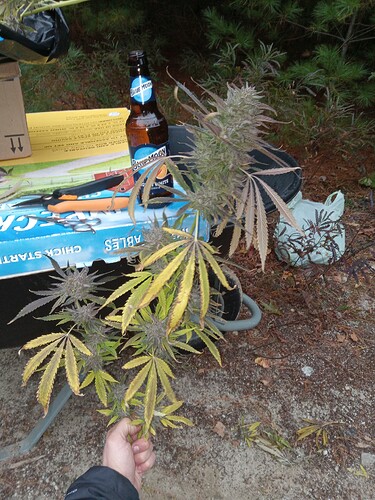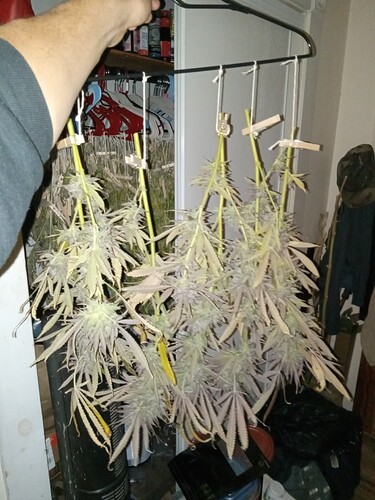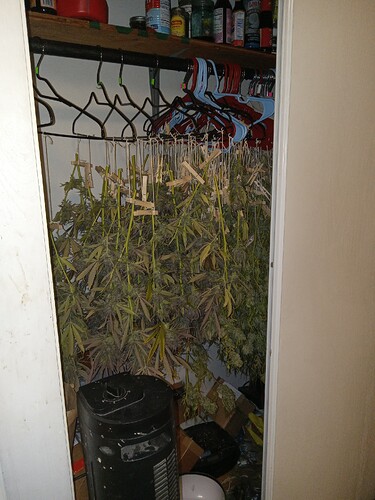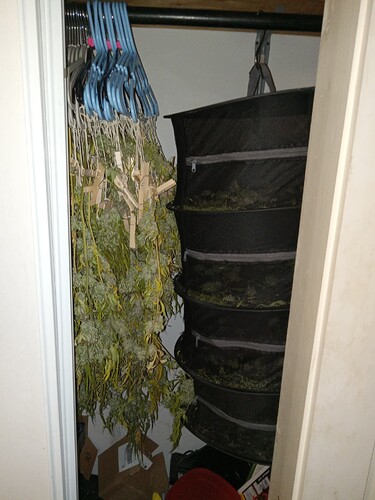You should keep in mind that the same cannabis strain will behave very differently in different climates. Based on your name, I assume you live in California. I live in Rhode Island, and the New England grow climate is very different. Furthermore, different strains have different flower times as you already know. Out here the harvest time tends to range from mid September to mid October depending on when the plants begin flowering and the strain. Many pure sativas won’t finish until November (a pure Haze may even go until December) but those are generally not grown in this region because the frost usually comes in mid October. This makes it very risky to grow strains with a flower time of 12 weeks or more outdoors here unless they are in a temperature controlled greenhouse.
You say that your plants just began flowering which is an example of how different our climates are - day lengths are probably not the same in Little Rhody vs Cali. My plants all began flowering right around August 1st. Some began last week of July and others began first week of August, but I can ballpark them all around August 1st. Since your strains just began flowering and mine began flowering more than a month ago it makes sense that yours usually don’t finish until a bit later. Cannabis does flower based on calendar date it goes based on day length, and once flowering begins it is usually roughly the same number of days left, meaning the flower time remains consistent regardless of when the plant begins the flowering process.
You can see from my screenshot that Watermelon Zkittlez has an average flower time of 63 days, which is roughly exactly 2 months. Since they began flowering around last week of July / first week of August, by adding exactly 2 months we can predict she will be fully mature around last week of September / first week of October. So this leads me to conclude that we definitely have more than 2 weeks, but not much more, probably only three. Maybe four at the very most, although it is likely bud rot will be kicking in by then and the bacterial leaf spot could get worse so by 3 weeks I will probably have to harvest to avoid losing too much crop to mold or fungal pathogens. Last year the bacterial leaf spot ruined my Watermelon Zkittlez as the strain is extremely prone to mold and fungal issues. I don’t find it to be particularly prone to bud rot but it will pretty much always develop some bacterial leaf spot. This year I gave it a much better environment with great drainage and maximum air circulation with no other plants right next to it. Even in perfect conditions the bacterial leaf spot was STILL getting out of control. I recently bought a product named OxiDate 2.0 used by dispensaries, they normally only sell to businesses and it was tough to find a source willing to ship to my address. The product cost $200 and I had to pay $60 for shipping because it is considered a hazardous chemical - it’s basically like pure hydrogen peroxide on crack. It has paracetic acid in it too. Alot of dispensaries use it up until a few days before harvest, it oxidizes extremely quickly and leaves no residue behind. It also burnt the fuck out of my hand just from getting one single drop of the pure product on my skin, so I understand why they don’t sell to regular people and only registered businesses. I wear gloves now. Once diluted with water it isn’t so dangerous as you use it at 1% concentrations. This product is very effective and as soon as I began using it the bacterial leaf spot stopped spreading.
Regarding your compost question - I attached another screenshot explaining that bread is a green compost as it is high in nitrogen. It can also have salt or chemicals in it, and so it is not a good base for a pile. With that being said, in small amounts it is beneficial to a pile. Most things are not beneficial in large amounts, such as coffee grounds for example, which are good in small amounts.
The limiting of compost to fruits, veggies, leaves, and twigs is more of a general guideline for regular home composters. Research on composting will often tell you that you should not put meat, fish, or dairy into your compost. However, this is not because meat, fish, or dairy lack nutrients. Fish and meat is very rich in nitrogen. Fish and animal bones are very rich in phosphorous and calcium. Dairy is also rich in calcium. Furthermore, the microbes that break down compost LOVE animal wastes, so they are a great food for bacteria. My favorite compost product (and arguably one of the very best on the market) is Coast of Maine Lobster Compost which sells for $15 per cubic foot. Compare this to standard compost which sells for a fraction of that price and will not produce the same results. Many of the very best composts on the market are made from fish and animal wastes - not just the poop but also the meat and bones. If you look on a bag of Fox Farm Ocean Forest soil you will see they have crab meal, shrimp meal, and fish emulsion mixed in - hence the name Ocean Forest. I mix fish guts and shrimp shells into my compost.
So if it produces great compost, why will most sources tell you not to composy meat, bones, or dairy? Why only compost veggies and leaves? Because they are assuming you are the average person living in a residential area, not Coast of Maine with many acres of land for the purpose of composting. If the average person dumps a bunch of fish guts into their compost, all of their neighbors will want to kill them as they will wake up to the smell of rotting fish every morning. Keep in mind that I live on 90 acres of land, so my style of composting is a little more hardcore than what most people can reasonably do. My compost pile is roughly 100 yards away from our house and when I add fish guts we can still smell the fish from inside the house for a week or so. If you are within 50 feet of the pile, it smells like a fish factory for that first week after adding the fish. THIS is why your research has told you not to do it, so you don’t get yourself into trouble. It also attracts wild animals, which I don’t mind because I use it as a decoy. The wild animals love to pick food out of my compost pile but they never bother the cannabis or vegetable plants I have growing only 15 feet away from the pile. Why, you might ask? Because why would a wild animal want to eat my cannabis or pepper plants when they have access to an all you can eat buffet with seafood and prime rib?
I have never done bokashi myself but I have learned about it and have considered adding it to my repertoire. It is definitely not required to break down organic matter though. It does do a great job of fermentation but bokashi is not the only way to break down organic matter. Bokashi is more for regular residential composters that lack much outdoor space since it gives you the ability to compost indoors, and the compost can be of very high quality. But I highly doubt Coast of Maine is doing a bunch of bokashi indoors to get their compost going - their compost piles are like a mile long or something crazy like that with bulldozers, backhoes, and industrial equipment to turn it. Really all you need to break down organic matter is great microbiology - plenty of beneficial bacterias and food for those microbes. Ideally you want more aerobic bacteria rather than anaerobic which means you should keep the pile well aerated. The pile should be moist, not too dry, not too wet, to promote those aerobic bacteria. I also add some Compost Starter, which is beneficial bacterias designed for breaking down organic matter into compost. Worms are also great for this and a pile rich in organic matter will tend to attract worms. Some people primarily use worms for composting, which is known as vermicomposting and results in earthworm castings, some of the best compost out there (great for nitrogen and beneficial bacteria anyway, not so much for phosphorus or potassium). So as you can see there are many different styles of composting and different types of strategies for breaking down organic matter - even just burying organic matter in the ground will compost it, which is another ancient method of composting that I forget the name of. Depending on who you are, where you live, and the resources available to you one method of composting might be a better choice for you than another.
